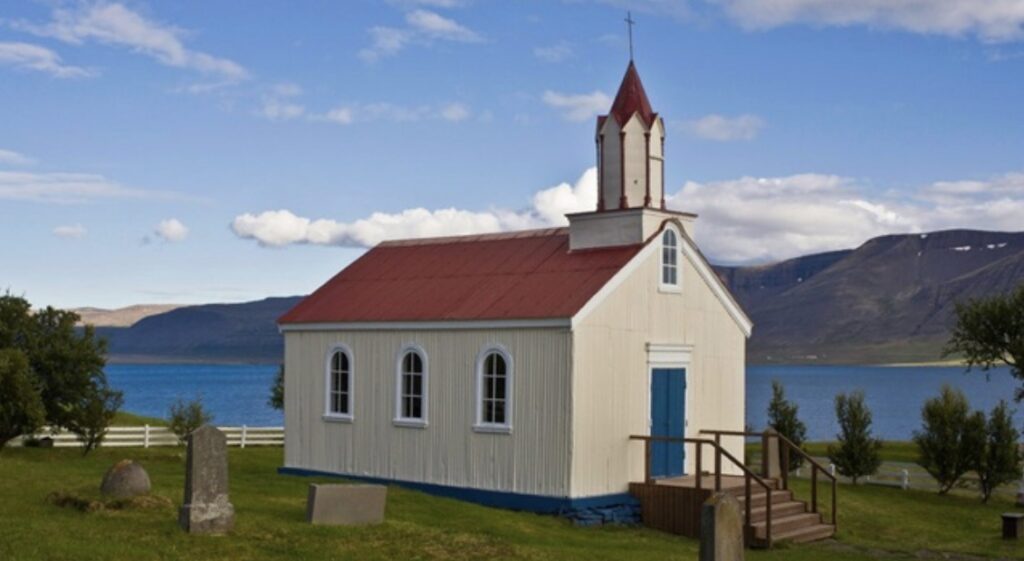[Patheos, Roger E. Olson] What Has Happened to the Evangelical Christianity of Not Long Ago?

The other day I was having a conversation with a man about my age who entered the Christian ministry as a very young man—while still in college. My father did the same. He began pastoring a church at age 19! I grew up in a church world where young men (and women) were expected to hear a “call from God” to some kind of vocation of service while they were teenagers.
My conversation partner pastored some very large as well as some very small churches in his pastoral career. Now he teaches students studying for Christian ministry—as I do.
This man said something to me that I thought only I thought: “The Christianity of my youth is gone; I don’t find it anywhere.” I have thought that to myself but been afraid to say it to anyone. I had to agree with him. We both grew up in and began our ministries within the “heart” of American conservative Protestant, evangelical Christianity. We both have taught at several Christian institutions of higher education and we both have traveled much—speaking to Christian audiences both inside and outside of churches. We have both written books published by evangelical Christian publishers. We both have our finger on the “pulse” of contemporary American evangelical Protestant Christianity and we both grew up in and began our ministries in what that used to be. We are both dismayed at how it has changed.
We were not talking about “drums on the platform used during worship.” We were not talking about styles of dress or hair or anything like that. We were talking about substance.
We both know what evangelical Protestant Christianity was like in terms of substance in the middle of the twentieth century—in America. We both know what it is like now. And to us, at least, the change of substanceis so radical that we have trouble recognizing contemporary evangelical Protestant Christianity in America as in continuity with the religious form of life we both grew up in and began our ministries in.
Let me explain (after the usual disclaimer paragraph!)….
*Sidebar: The opinions expressed here are my own (or those of the guest writer); I do not speak for any other person, group or organization; nor do I imply that the opinions expressed here reflect those of any other person, group or organization unless I say so specifically. Before commenting read the entire post and the “Note to commenters” at its end.*
It’s actually difficult to know where to begin! Almost everything has changed substantially. But what I mean by “substantially” will only be revealed by my examples.
First, church was extended family; people knew each other and were involved in each other’s lives. There was no notion of “personal privacy” if you were a member of the church—except in the bathroom and (normally) bedroom. When the church was large, the Sunday School class was your extended family. If you were a member or regular attended and missed two Sundays in a row without explanation you could expect a visit from a pastor or Sunday School teacher. I could go on, but that should give you a taste of what I’m talking about.
Second, and following from “first,” home visitation was a big part of a pastor’s job. If the church was large this might be delegated to Sunday School teachers or others (e.g., elders or deacons). Also, hospital visitation was expected of pastors—even if they could not get to everyone every week (due to the size of the church and the city).
Third, evangelism and missions were central to church life. People had missionaries’ pictures at home and prayed for them as well as supported them financially. Many churches had “missionary barrels” where people put non-perishable items to send “overseas” for the missionaries. When the missionaries came “home on furlough” they traveled around speaking in churches and were expected to talk about conversions and church planting and building. “Transformative initiatives” were not enough; “winning lost souls to Jesus” was the common language and it was expected.
Following as part of “third” is that all evangelical churches had programs for training members to witness and evangelize. Everyone was expected to witness to their neighbors, co-workers, fellow students, etc.
Fourth, the worship space was treated as a place for reverence and respect. It was not “the auditorium” but “the sanctuary” and drinking beverages and eating food was absolutely forbidden. Every church had “ushers” part of whose job it was to speak to people who were not showing proper reverence and respect for the worship space—not so much because it was considered especially “holy” or “sacred” but because munching food and gulping beverages was distracting to others and just not proper during worship.
Fifth, most of the work of the church was performed by volunteer lay people instead of paid staff people. It was expected that every member would volunteer part of his or her time to do something for the church. Anyone who didn’t was considered a backslidden person in need of correction or even excommunication. There were excommunicated people who attended regularly, but they were not allowed to hold any positions of leadership and were the subjects of much prayer and visitation.
[Editor’s Note: This was written by Roger E. Olson and originally published at Patheos]
[Editor’s Note: Title changed by P&P.]











